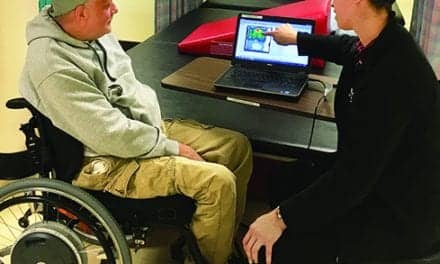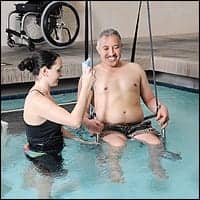In the American Geriatrics Society and the British Geriatric Society’s first update of guidelines on preventing falls in older people since 2001, they now recommend that all interventions for preventing falls should include an exercise component and that a number of new assessments should be used, such as feet and footwear, fear of falling, and ability to carry out daily living activities.
The guidelines, recently published in the Journal of the American Geriatrics Society, New York, also state that fall screening and prevention should be a part of all health care practices for older adults.
"Falls are one of the most common health problems experienced by older adults and are a common cause of losing functional independence,” said Mary Tinetti, MD, of Yale University School of Medicine, and one of the panel chairs, in a statement. “Given their frequency and consequences, falls are as serious a health problem for older persons as heart attacks and strokes.”
The guidelines were compiled by a panel comprising members from the previous panels and new members with substantial knowledge, experience, and publications in fall prevention and care of older patients, and are based on a systematic review of the randomized controlled trials of fall prevention interventions.
The literature search included metaanalyses, systematic literature reviews, randomized controlled trials, controlled before-and-after studies, and cohort studies published between May 2001 and April 2008. The panel also reviewed the RCTs published between April 2008 and July 2009 and concluded that the additional evidence did not change the ranking of the evidence or the guideline recommendations.
The guidelines now state that physicians and other health professionals should determine whether their older patients are at risk of falling by asking if they have fallen recently or if they are unsteady walking. If so, health providers should look for the presence of known problems such as muscle weakness, poor balance, or blood pressure that drops too much on standing. If they have these problems, then older adults should receive the interventions described in the guidelines, but if there is no evidence of gait problems or recurrent falls, they do not require a risk assessment.
The new recommendations for interventions focus on:
- Multifactorial interventions, which include exercise for balance, gait, and strength training, such as tai chi or physical therapy
- Environmental adaptation to reduce fall risk factors in the home and in daily activities
- Cataract surgery where needed, but they recommend against vision intervention as an individual approach
- Medication reduction, regardless of the number of medications prescribed (in 2001 this was only recommended for those on at least four) with particular attention to medications that affect the brain such as sleeping medications and antidepressants
- Focus on raising low blood pressure and managing heart rate and rhythm abnormalities
“We found that the most effective trials for preventing falls in older people looked at multiple interventions rather than just one; previous studies have indicated that it is more effective to focus on one intervention, but because we looked at not only what recommendations were given, but also which carried out, we’re confident that multifactorial interventions is the best course of action,” Tinetti added. “There is emerging evidence that the rate of serious fall injuries, such as hip fractures, is decreasing modestly in areas in which fall prevention is integrated into clinical practice. By making fall prevention part of the clinical care of older adults this trend can continue.”
[Source: American Geriatrics Society]



